Abstract
1. Dose-response relationships to K+ were determined in isolated strips of rabbit aorta. 2. K+ contractures were induced by 30 mM K+ in paired strips from individual animals. The effects of hydralazine and hydralazine acetone hydrazone (hydralazine acetonide) on these contractures were studied. 3. Hydralazine and hydralazine acetonide both produced dose-dependent decreases of K+-induced tone. Threshold concentrations for hydralazine were 11.89 +/- 4.5 X 10(-5) M (mean +/- s.d.) and for hydralazine actonide 9.7 +/- 4.6 X 10(-5) M (0.5 less than P less than 0.4). 4. The magnitude of the effect of hydralazine acetonide was greater than that of hydralazine at all concentrations above threshold, as reflected in a significant difference (P less than 0.05) in the slopes of dose-response curves to the two treatments. The vasodilator effects of hydralazine and the acetonide were terminated by washout of the bath. 5. The differences in effect were not due to instability of hydralazine under in vitro conditions. 6. It is concluded that hydralazine acetonide has intrinsic activity on vascular smooth muscle which differs significantly from that of the parent compound and that this may contribute to the hypotensive effects which follow administration of the parent compound.
Full text
PDF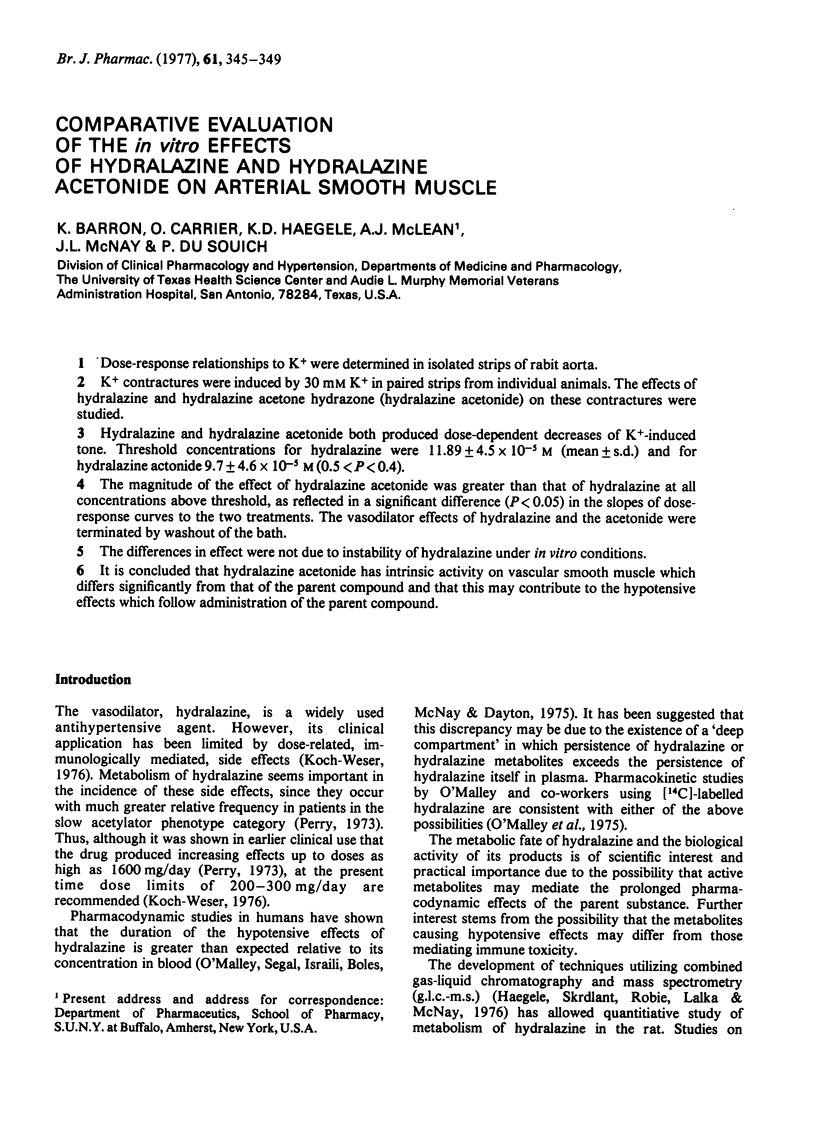
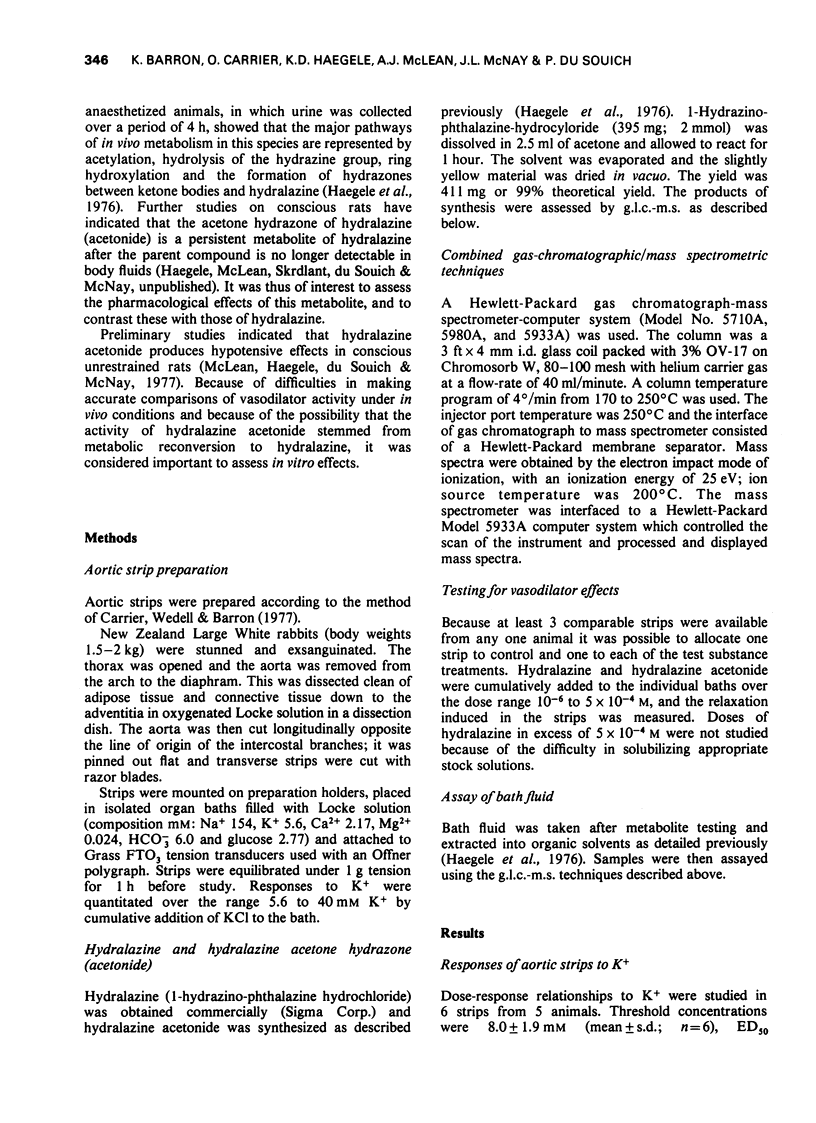
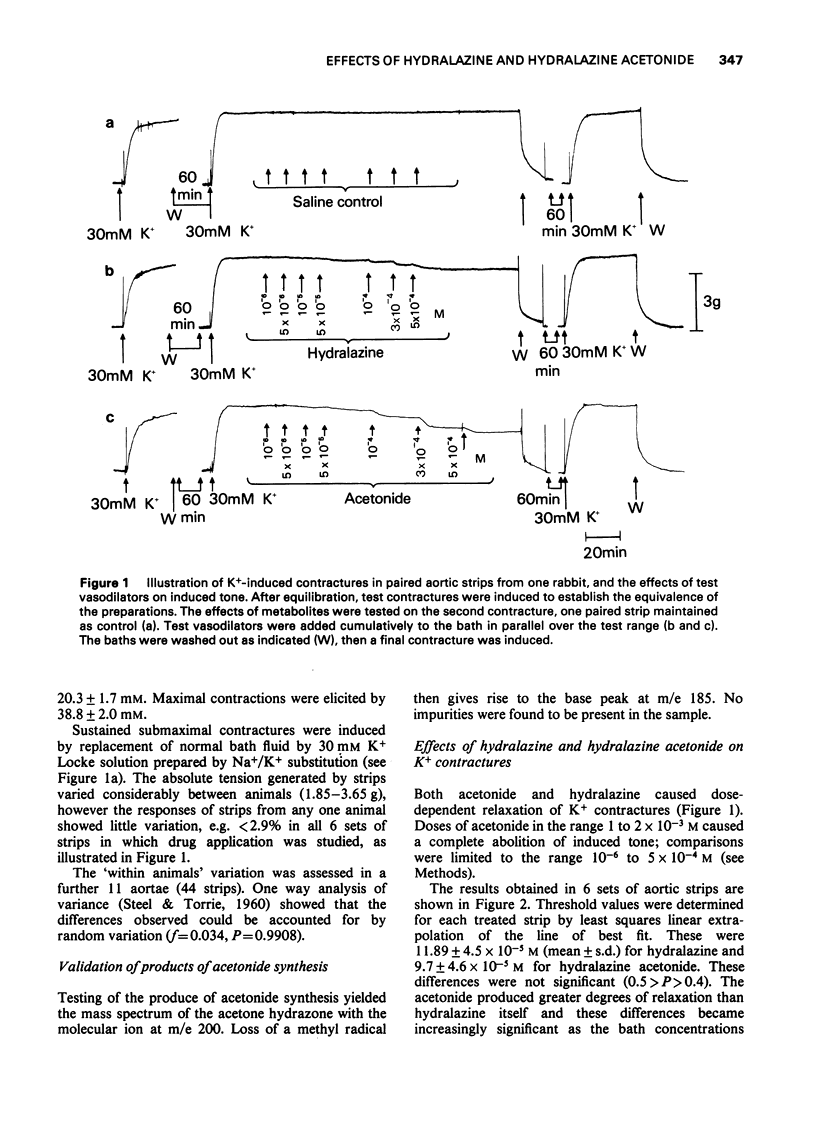
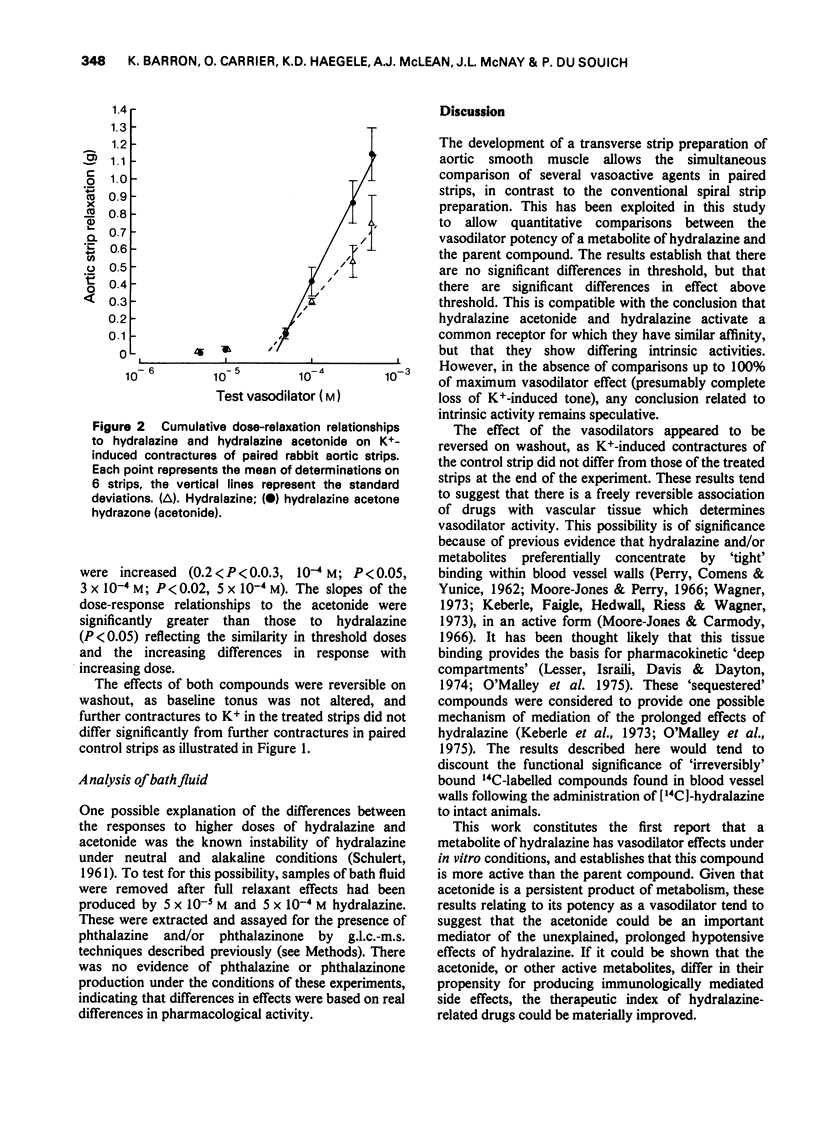
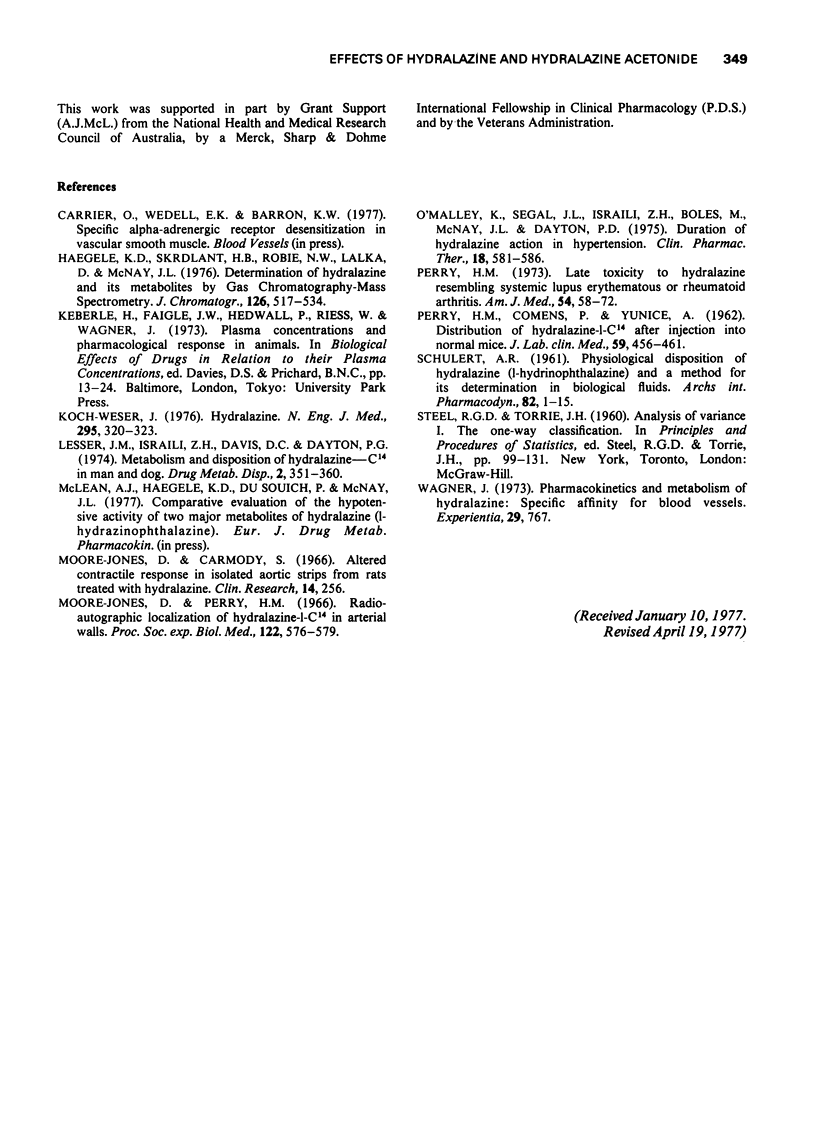
Selected References
These references are in PubMed. This may not be the complete list of references from this article.
- Haegele K. D., Skrdlant H. B., Robie N. W., Lalka D., McNay J. L., Jr Determination of hydralazine and its metabolites by gas chromatography-mass spectrometry. J Chromatogr. 1976 Nov 3;126:517–534. doi: 10.1016/s0021-9673(01)84098-x. [DOI] [PubMed] [Google Scholar]
- Koch-Weser J. Medical intelligence drug therapy. N Engl J Med. 1976 Aug 5;295(6):320–323. doi: 10.1056/NEJM197608052950606. [DOI] [PubMed] [Google Scholar]
- Lesser J. M., Israili Z. H., Davis D. C., Dayton P. G. Metabolism and disposition of hydralazine-14C in man and dog. Drug Metab Dispos. 1974 Jul-Aug;2(4):351–360. [PubMed] [Google Scholar]
- Moore-Jones D., Perry H. M., Jr Radioautographic localization of hydralazine-1-C-14 in arterial walls. Proc Soc Exp Biol Med. 1966 Jun;122(2):576–579. doi: 10.3181/00379727-122-31195. [DOI] [PubMed] [Google Scholar]
- O'Malley K., Segal J. L., Israili Z. H., Boles M., McNay J. L., Dayton P. G. Duration of hydralazine action in hypertension. Clin Pharmacol Ther. 1975 Nov;18(5 Pt 1):581–586. doi: 10.1002/cpt1975185part1581. [DOI] [PubMed] [Google Scholar]
- PERRY H. M., Jr, COMENS P., YUNICE A. Distribution of hydralazine-1-C-14 after injection into normal mice. J Lab Clin Med. 1962 Mar;59:456–461. [PubMed] [Google Scholar]
- Perry H. M., Jr Late toxicity to hydralazine resembling systemic lupus erythematosus or rheumatoid arthritis. Am J Med. 1973 Jan;54(1):58–72. doi: 10.1016/0002-9343(73)90084-3. [DOI] [PubMed] [Google Scholar]


